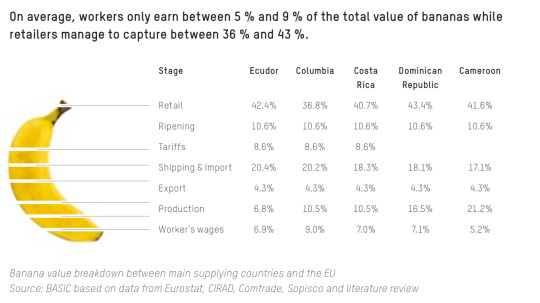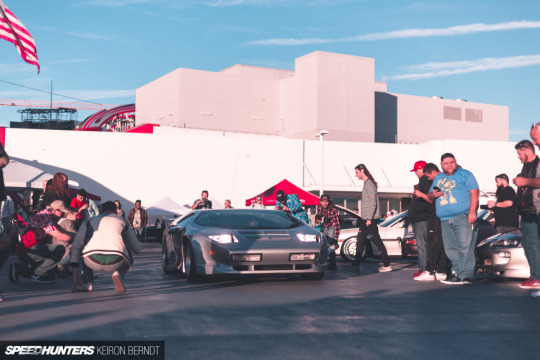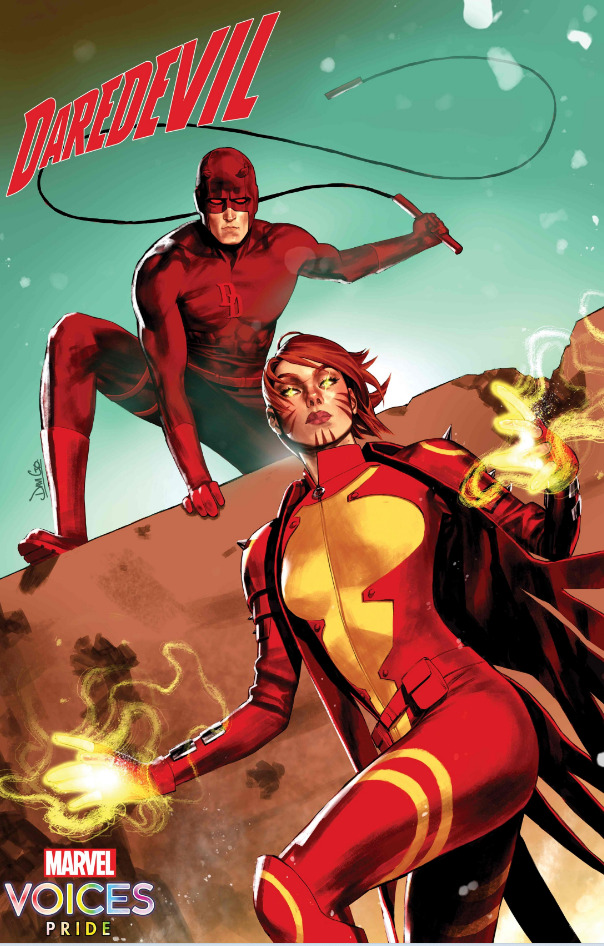#difference between sales and marketing with example
Explore tagged Tumblr posts
Text

What's the major difference marketing and sales? You might have heard that question a lot of times. Here in this blog we have tried to cover every aspect of this topic.Marketing is the process of creating value for a company through the creation and distribution of products or services. Selling is the act of exchanging goods or services for money.
0 notes
Text
The local population in countries that export bananas typically eat different varieties grown primarily by small farmers. The ones for the Americans and the Europeans, Cavendish variety bananas, are grown in huge, monoculture plantations that are susceptible to disease. The banana industry consumes more agrichemicals than any other in the world, asides from cotton. Most plantations will spend more on pesticides than on wages. Pesticides are sprayed by plane, 85% of which does not land on the bananas and instead lands on the homes of workers in the surrounding area and seeps into the groundwater. The results are cancers, stillbirths, and dead rivers.
The supermarkets dominate the banana trade and force the price of bananas down. Plantations resolve this issue by intensifying and degrading working conditions. Banana workers will work for up to 14 hours a day in tropical heat, without overtime pay, for 6 days a week. Their wages will not cover their cost of housing, food, and education for their children. On most plantations independent trade unions are, of course, suppressed. Contracts are insecure, or workers are hired through intermediaries, and troublemakers are not invited back.
Who benefits most from this arrangement? The export value of bananas is worth $8bn - the retail value of these bananas is worth $25bn. Here's a breakdown of who gets what from the sale of banana in the EU.

On average, the banana workers get between 5 and 9% of the total value, while the retailers capture between 36 to 43% of the value. So if you got a bunch of bananas at Tesco (the majority of UK bananas come from Costa Rica) for 95p, 6.65p would go to the banana workers, and 38p would go to Tesco.
Furthermore, when it comes to calculating a country's GDP (the total sum of the value of economic activity going on in a country, which is used to measure how rich or poor a country is, how fast its economy is 'growing' and therefore how valuable their currency is on the world market, how valuable its government bonds, its claim on resources internationally…etc), the worker wages, production, export numbers count towards the country producing the banana, while retail, ripening, tariffs, and shipping & import will count towards the importing country. A country like Costa Rica will participate has to participate in this arrangement as it needs ‘hard’ (i.e. Western) currencies in order to import essential commodities on the world market.
So for the example above of a bunch of Costa Rican bananas sold in a UK supermarket, 20.7p will be added to Costa Rica’s GDP while 74.3p will be added to the UK’s GDP. Therefore, the consumption of a banana in the UK will add more to the UK’s wealth than growing it will to Costa Rica’s. The same holds for Bangladeshi t-shirts, iPhones assembled in China, chocolate made with cocoa from Ghana…it’s the heart of how the capitalism of the ‘developed’ economy functions. Never ending consumption to fuel the appearance of wealth, fuelled by the exploitation of both land and people in the global south.
7K notes
·
View notes
Text
There's a whole lot of towns out there that you'll never visit. Most of them are chock full of people you'll never meet. Tulsa, for example. Never been there, might never go there. And that makes me a little sad.
Sure, I only have enough time on this earth to visit so many towns. And when I'm there, I don't have enough time to interrogate every single one of the locals to see if, say, any of them have a set of Mopar F-body windshield wiper linkages sitting in the back of their garage. They'll just go to waste, damned to irrelevance by my lack of time. That's what the MBAs call a "market inefficiency."
The internet has helped, sure, but you can only demand what other people have supplied. Any quick browse on a model-specific forum is full of lonely folks crying out to the heavens for a specific piece of trim, or an entire automatic transmission, that they will never receive. And it's a lot of work to put that stuff up for sale. Who knows what's actually inside that weird pile of oil-stained gewgaws that Pawpaw left behind before he joined that alien cult and drank all that Flavor-Aid? His surviving next-of-kin sure don't know the difference between a 4.11 and a 3.90 rear end, nor are they willing to teach themselves that information in order to list it on eBay for twenty bucks.
Don't worry, though, I have a solution. That solution is that the Boston Dynamics warehouse is not secured very well. Their robots are powered by a two-stroke lawnmower engine: it's like they wanted me to show up with a turbine-generator-powered plasma cutter and chop right through the rebar holding the walls of their robot storage lockup together. After that, it was a quick couple of dozen trips to the local electronics store to get the right USB-to-serial cable, and I soon had my harem of semi-autonomous Parts-Seeking Drones® roving the backwoods of America.
So, if you see a lanky, creaking doglike shape lurking outside your yard tonight, smelling oddly of pre-mix and human arterial blood, let it in your garage. All it wants to do is scan your spare parts so I can find that goddamn last piece of dash trim for the cruise control lever on my Volare. Don't worry: I won't have the robots kill you if you decide not to sell it to me after all. It would be hypocritical of me to judge another hoarder. We'll have coffee when I come see your town for the first time! We can trade junk and be best friends and call each other on the phone afterward and talk about nitrous oxide. No promises on what the robots will do if they search your entire property and don't find any Plymouth Volare stuff, though. I forgot to program that part before I let them out of radio range.
247 notes
·
View notes
Note
hey silly question maybe. do you know why cars are so boring now? like im on the wikipedia page for the cadillac eldorado for Reasons and it's a really visually interesting car through all the generations up until like. the tenth in 1979 when it just kinda looks like. every other car (if a bit more square) is this just like, the Capitalism Thing of shit getting more and more boring and samey over the years? or is there like a reason. idk much about cars but this has always annoyed and confused me, i miss interesting looking cars :(
Well, it should be noted that the tenth generation Eldorado's case is a peculiar one. As I've gone over, old American cars tended to be refreshed every other year, and the Eldorado, meant to represent the top of the top of that uniquely American idea of opulence, was perhaps the car most supposed to do so. Hence, as you'll have found, its ninth generation launched in 1971, just 18 years after the first - thats' how long the only generation of Italy's best selling car at the time, the Fiat 500, was sold for.

You wouldn't have expected that generation to stick around for more than four years - no other generation did, and almost all lasted half that. However, 1973 had other plans. Namely, the fuel crisis that completely eviscerated demand for mastodonic fuel guzzlers.
Sales would decline the following years, with little tweaks here and there but no major update, which would have been money down the drain as existing owners could barely afford to fill up the damn things, let alone upgrade, and what were potential customers before couldn't afford to fill up the damn things full stop. So when the new model finally came, this big aspirational car was shrunken down to get on with times of shrinking aspirations.

Nigh on 5.20 meters (for yankees, that's roughly 4/207ths of a Titanic) will hardly seem short to European sensibilities, but let's remember, that's coming from 5.70. You could walk between two walls that far apart. The width, too, decreased by a whole 20cm (for yankees, that's roughly half a rabbit), which in car width terms is massive - like, it's the difference between a Mini and a Mustang.

This to say, the tenth generation Eldorado is oft maligned as a fall from grace, one of the most popular examples of why the malaise moniker stuck to this era of American cars - so not exactly the fairest assessment of how cars changed with time. How about, then, we start our analysis by looking at a car with a much better received update, shall we?

Of course, the Mk1 Volkswagen Golf (for yankees, that's roughly a Rabbit) was a smash hit the world over, so much so that in Mexico it remained on sale as the Citi Golf as recently as 2009(!), and if I didn't think it the best looking Golf that ever was I probably wouldn't own one...

...but unless the only kink you're into is the Hofmeister, I don't see how the second generation's styling is such a downgrade as to bemoan the state of things. And frankly...






...maybe it's just the boiled frog syndrome, but I can't spot a point in which anything 'went wrong', so to speak. Which leads to the all-important question:
You say you miss interesting looking cars, but I do have to ask - when did they ever leave?
Have a browse of my pride post (no, really, go read it, I think it's one of my best ever) and point me to the boring cars within it, because me, I don't see any. And I suspect the reasons are similar to why you see older cars as more interesting.
For one, given the point of the post, all the cars shown are some flashy color, and each is different from every other. This, however, is increasingly becoming an anomaly as greyscale gobbles up an ever increasing share of the market, meaning on average, modern cars are less colorful, and thus less visually interesting. I've written about cause and effect of the greyscalification of cars, and suffice to say I'm not a fan of it - but I feel like that is a discussion separate from car design itself.
Then, of course, there's that those in the post are all cars that I like, so that selection was curated (albeit only by my personal taste). But that is also the case when we look back at older cars: what you see around and what you hear about is what people cared enough about to preserve and to discuss - not just in terms of models but of versions, specs and even colors. If you look at car shows like Radwood or Oblivion, which celebrate 80s and 90s cars, the very time period you referred to as the beginning of the end for interesting design looks like its heyday!










Yes, that trailer is factory.
Unfortunately, it must be said that unique and interesting cars have become fewer and fewer, as the ever increasing regulations make it even more expensive than it already was for smaller brands to emerge and the economic status of things makes it increasingly harder to justify a funky, daring picks for the biggest purchase of the average person's life - let alone the purchase of a second car, which tends to be what more extreme offerings were bought as. A brighter future seems to be ahead, though, with Toyota's incredible GR Corolla/Yaris and 86 apparently about to be joined by yet more spicy goodness and Mazda teasing a return of the rotary engined sportscar. For the twentieth time, sure, but after having seen the Motocompo revival actually happen, I am ready to kick that football.

(because you knew about the new electric Motocompacto, right?)
But there's another thing that post's selection had going for it: variety. Pretty much every car in it was in a wholly different category from all the others, and that is bound to make each car within it seem a lot more interesting than if it had been surrounded by cars of its same segment.
The survivorship bias outlined above also results in far more variety than you would find in normal traffic: even setting aside the halo car dynamic whereby the most special -and therefore most interesting- cars are usually niche offerings with very low sales figures, people tend to remember, discuss and seek out cars that represent some extreme - be it the fastest, the most expensive, the greatest, but also the slowest, the cheapest, the worst... and the tallest, the lowest, the biggest, the smallest, and so on. In short, the cars you'll find the least interest for are the everyday, quietly competent cars that make up the bulk of vehicles on the road.
Although, going far enough back in time, even those appear interesting to us, because their context's norm was so different from ours that even the cars that most adhered to it seem exotic to our sensibilities.
But when actually viewed in their own context...




...that impression tends to be stifled.
Unfortunately, it seems to me as though variety is also being stifled nowadays, with a growing share of body styles on sale becoming SUV/crossovers, and the increase in platform sharing reducing automotive outliers (for better and for worse).
And I should note: as for the other industry shifts I mentioned, the driving force isn't Big Capital or The Evil Economic System or what have you. It's the consumers. Sure, we can blame manufacturers for turning every model into a more profitable SUV, but they couldn't do this if they didn't sell, and they wouldn't do this if people didn't see them as more prestigious vehicles worth paying more for. We can blame manufacturers for killing weird car projects, but usually they get axed because people don't buy the things. Dealerships still order grey cars because no one digs their heels about having theirs yellow. So on.
So in short, old cars have always looked more interesting, because time alters our perception of them in ways that make them seem as much - and it also happens that lately the car industry has gone in the opposite direction to those alterations, causing new cars to seem less interesting. So, in short, the problem is the comparison just isn't apples to apples.
I think this is why that Golf evolution does not show any trend towards boring or away from interesting in my eyes - because it mostly strips those factors away. Here's a bunch of generations of the same car, all silver, all presented with no context bar the version before or after, all in the same body style which, for its entire history, was a common sight pretty much anywhere. (Also helps, of course, that the Golf's evolution had no wacky twists and always nailed the zeitgeist.)
This not to say that I can't complain about modern car designs - but for that, don't compare apple to apple... compare it to Microsoft.
See, I can think of many modern designs I find bland and devoid of personality, not because of a lack of styling effort but precisely due to an overabundance of it: so keen were the designers to put a crease here and a fold there and a kink somewhere to make the brand's seventh SUV set itself apart from the other six that the design became too overburdened with details to have a clear message - like a story with too many events for them to express a cohesive point.
Or, indeed, like this parody of Microsoft packaging in which their design principles are applied to the iconic, nay, legendary packaging of the original iPod.
youtube
This is an actual Microsoft video btw. This was made internally by Microsoft's marketing department.
Links in blue are posts of mine about the topic in question: if you liked this post, you might like those - or the blog’s Discord server, linked in the pinned post!
#hope this answers the question to a satisfactory degree#as per usual excuse the large delay#and as per usual this was meant to be 4x shorter than it eventually ended up being and isn't even longer only thanks to great self-restrain#car design#cadillac eldorado#fiat 500#mini cooper#ford mustang#volkswagen golf#honda motocompo#honda motocompacto#also GOD ACTUAL FUCKING DAMMIT SCREW YOU SLIDING READ MORE ANNGHGHGHGH#(when you edit posts on desktop the Read More slides down a block and if you forget to move it back as I did your post will look idiotic)
33 notes
·
View notes
Text
The history of engagement rings and how diamonds became the norm
While today engagement rings represent a symbol of love and eternal commitment, historians believe the first engagement rings appeared in Ancient Rome - more as a symbol of a legal contract than love itself. But it’s only much later when we have the first introduction of diamonds for engagement rings.
The first diamond engagement ring known in history was given by Maximilian I, a Habsburg, in 1497. He traveled to meet his bride and brought her a diamond ring as a gift. This marked the beginning of the tradition of using diamonds in engagement rings. At that time, the only place to find diamonds was in India, making them extremely rare and expensive, something truly reserved for royalty.
As we move through history, we see a period when engagement rings fell out of fashion and were replaced by more elaborate, detailed wedding rings. Later, engagement rings came back into style. In 1840, with Queen Victoria's engagement, the tradition of the engagement ring became more consistent. However, the engagement ring she received is not the one that comes to mind today. Our imagination is filled with Tiffany's solitaire ring, often seen in movies. But Queen Victoria received a ring in the shape of a snake, as the snake was a symbol of eternal love. The main gemstone in the snake's head was an emerald, which is quite different from what we're used to. Why an emerald? It was the gemstone for her birth month, leading to another tradition: using colored gemstones in rings based on a person's birth month.


Returning to the subject of diamonds, we fast-forward to 1887 when diamonds were discovered in South Africa. This shifted the market away from India as the sole supplier, flooding the market with diamonds, and their prices dropped significantly. Something that had once been exclusive to royalty became accessible to the middle class, and diamonds became very popular.
In 1889, a company called De Beers emerged - which you may have heard of because celebrities often being seen wearing De Beers diamonds on red carpets - came to dominate the diamond market, controlling the supply. It established a monopoly in South Africa, and eventually, worldwide. To this day, only a few companies control the entire diamond trade, and diamonds remain so expensive not because they are extremely rare, but because the market is artificially controlled to prevent prices from dropping.
If you think in terms of rarity, for example, a Paraíba tourmaline is rarer than a diamond. Diamonds can be found in various countries, but Paraíba tourmalines are only found in specific regions of Brazil and a few locations in Africa. They are not as widespread. So, the high value of diamonds is not due to rarity. That’s not to say diamonds aren’t beautiful—they have many desirable characteristics, such as their hardness on the Mohs scale. Many marketing campaigns have been built around this.
In the 1930s, De Beers launched a campaign to have celebrities wear diamonds on the red carpet. This was during a time of war and the Great Depression when couples couldn't afford diamonds and were opting for other gemstones in their rings. By showcasing celebrities flaunting diamonds, they rekindled the desire and made it seem like a good investment for couples. The campaign worked very well, with sales increasing by 50% in the following years.
In the 1950s, De Beers launched another campaign, one we still repeat today: “Diamonds are forever,” drawing a connection between the diamond’s eternal nature and the commitment a person makes at that moment in their life. The campaign was a huge success, and we still repeat the phrase today, with sales soaring again. All of this solidified the diamond in our imagination as the perfect gemstone for engagement rings.
In 1953, the movie Gentlemen Prefer Blondes starring Marilyn Monroe included that iconic scene with the pink dress where she sings and dances about diamonds being a girl's best friend. These are ideas we still repeat today, showing the powerful influence this has on our imagination. Movies often reinforce this idea, but I’m here to tell you that the value of diamonds is heavily influenced by market control, which limits supply to keep prices high, and by decades of marketing campaigns designed to create desire. I’m not saying you should stop liking diamonds—they remain a wonderful, beautiful gemstone with incredible brilliance. I just want you to know that they’re not your only option. If you like a colored gemstone that represents you, you can use it in your engagement ring.
Even looking at royal engagement rings, not just Queen Victoria's with an emerald, but also Princess Eugenie’s with a pink sapphire, and of course, the most famous engagement ring in the world, which belonged to Lady Diana and was passed down to Kate Middleton. It features a blue sapphire as the main gemstone, surrounded by diamonds and set in white gold. But what defines that ring is the blue sapphire. So, if you like a colored gemstone, feel free to put it in your ring without shyness or do you think Princess Kate is wrong or being tacky?
#personal#femininity#level up#engagement#engagement ring#traditional gender roles#glow up#wedding#jewelry
28 notes
·
View notes
Text
tags from @lierdumoa
#but they wanna "boycott" voting because nobody explained to them the difference between a citizen of a government vs. a netflix subscriber #"if we don't vote they'll have to listen!" no! they won't! that's the opposite of how reality works; not voting guarantees they ignore you #politicians ONLY listen to voters
yeah these are different paradigms! but you made me thinky thoughts so i'm expanding on this
corporations are already primed to think about negative space as space they could have claimed but have not, eg "we lost $15 million to piracy!" when there's no guarantee any of those eyeballs would have subscribed to netflix if not for torrenting, but presumptively they think you should be giving them your money. So if you tell a company "I'm not giving you my money because I disagree with your political donations to X" for example, that makes sense to them, their reputation and public perception of their viewpoints is affecting their bottom line
because for a corporation, bottom line--profit--is the biggest consideration. Market share is important but fundamentally if you don't generate more revenue than costs, you (eventually) have to go under. Individual sales do matter.
but voting.
like i understand the temptation to view your vote as currency, but it's not. You can't save it up for later. You can't exchange it for goods or services. And most crucially, a candidate doesn't need an amount of votes. They need a proportion of votes.
They don't want more votes like a corporation wants more money; for the corporation, more money is the final goal. For a candidate, more votes only matters in the context of more than the other guy. The competition is more important than the scale. If only 10 people vote but 6 of them vote for you, who cares about voter apathy, you won! A candidate is not threatened when you withhold your vote, because that doesn't change the proportion of votes they receive. A candidate is only threatened when you vote for the other candidate in an election, because that changes the proportion of votes.
the fact that different parties practice voter suppression or "rock the vote" stuff muddies people's understanding of this, I think. the thing you have to understand is that demographically, the bloc of voters affected most by these efforts will tend to vote Democrat. So when Republicans try to make it more difficult for a predominantly black district to vote, they're trying to shift the proportion of votes. There may have been Republican votes in there suppressed too, but they're outnumbered by the Democratic votes prevented. And when a liberal org runs a voter registration drive to help more people vote, they don't ask who you're going to vote for. They understand they're registering some Republicans voters too, but statistically they're registering more Democrats, so the effort is overall shifting the proportion of available votes. These efforts seem like they're about the amount of votes but it's never about the amount, only the proportion.
43 notes
·
View notes
Text
Dreamworks Animation: Intertextuality and Aesthetics in Shrek and Beyond by Sam Summers
Hi everyone, I am really delighted to see that my project interests so many of you. In this week post I will focus on one of the secondary sources I introduced in last week post which is Dreamworks Animation: Intertextuality and Aesthetics in Shrek and Beyond by Sam Summers.
I will specifically focus on the third chapter of the book titled: '"All Star' Soundtracks: DreamWorks and the pop song'. In this chapter Sam Summers focuses on the use of popular musics in the DreamWorks movies. He develops the several reasons for the specific use of popular songs instead of classic song like in other animated movies and especially Disney movies. To justify his arguments, he uses example that are from many different movies made by DreamWorks but not only Shrek. Nonetheless, many of his arguments do work with the first Shrek movie that he considers as a basis for the other DreamWorks movies.
His first argument is that the use of popular music in these movies are for the market appeal, people would identify the movie as rebellous and contemporary which is quite the opposite of Disney movies that are often associated with nostalgia. Furthermore, the movie appeals to a very large audience, both a young and older audience will find a song that they know in the movie. He also develops the notion of "cross-media synergy" which is the release of the movie and the songs at mostly the same time and both will "boost" the sales for the other and create an association between the two, 'All Star' by Smash Mouth is the best example because when we think about this movie we think of this music and when we hear the song we instantly think about the movie.
I won't elaborate his other arguments in this post but I will definitely use them in my project. I hope that you enjoyed my post and I hope that you are all doing well with your sources! I wish you a nice weekend and see you next week!
12 notes
·
View notes
Text
Some of the Pride Allies Variants are up
General housekeeping before I proceed with the Roast Fest
I want to make this explicitly clear: it is not my intention to hate on the artists themselves nor their art skills or anything along those lines.
Betsy Cola and Davi Go are both extremely talented and skilled artists. Support their work. Art is fucking hard and its even harder to actually get paid for it.
Betsy Cola is a queer Filipina and has an Instagram Page (but no online shop for prints). Lots of fun retro style (think 50s-60s-70s Pop Art)
Davi Go does have an INPRNT with lots of Marvel and DC Characters. Like nine different Emma Frost prints alone. A couple of lovely Laura Kinney and much more. For fine Art Prints, artists earn like 50% of the sale, I'm pretty sure.
I personally have no idea what goes into getting contracted to do any cover by Marvel, but I'm sure it was absolutely thrilling to get to do ANY work by a big company such as Marvel, where so many would get to see something I had made. I also have no idea how much an artist is told when they are contracted to make something. (Do they get told what it's for, or are they just given a generalized prompt? I truly have no idea)
I do know, that personally for me, doing ANYTHING of that caliber would be a dream come true. I've been reading comic books since I was five/six years old. While I only make shitty little fans arts and the occasional fanfic, if by some astronomical chance, I was offered to write or do a cover, I would absolutely jump on the chance. Or at least strongly consider it.
I am specifically critiquing Marvel's decisions as corporation to even come up with and sign off on something as obnoxious (and frankly, insulting) as "Pride Allies" for a variant series. Especially considering the overarching fact that historically Marvel has had its fair share of issues regarding its treatment of its queer characters -- lack of consistent appearances/storytelling, questionable treatment/writing choices, and blatant rainbow washing during Pride month to give a few generalizations (pick your favorite example, there's a lot). Sometimes its enjoyable to poke fun at company's ridiculous marketing ideas.
Much like the fact last winter they did a "Ski Chalet" variant series with skiing and snow activities, yet somehow didn't find an artist to do a variant of their ONE CANON OLYMPIC SKIIER.
But I digress.
In Summary: the act of creation is beautiful, don't be a douche canoe. Being punk is anti-establishment, not anti-people.
Thank you.
Now, ladies, gentlemen, and everyone in-between and outside thereof, first up we have:

Amazing Spider-man #52 by Davi Go
Davi Go does a pretty Northstar, I'll give him that.
But why is Spider-man here? What are they even doing? I know JP has canonically crushed on chatty dumbasses *cough cough* Iceman *cough cough* but I don't see the point of this pairing.
What are they even doing? Did Parker get lost on his way to the Pride Parade? Lmao.
Next:

Daredevil #10 by Davi Go
Rachel is very pretty. Looks very powerful here.
They both wear red, I'll give them that.
(I don't have much more to say on this one. I think my brain broke a little)
I genuinely do NOT see the point in pairing up a queer character with a random more popular Marvel hero. I repeat my question, who the hell signed off on this?
In my personal opinion, its just new lows in performative allyship and rainbow washing and whatever kind of marketing you wanna call it.
Source here for first two (directly from Marvel site)
#i want a good clean roast#no attacking the artists themselves as people#only making fun of bad corporate decisions#also go check out the dc pride stuff btw it looks lovely#northstar#jean paul beaubier#rachel grey#daredevil#spider-man
40 notes
·
View notes
Text
in this video on how correlation is not causation (& biases and fallacies to do with this), Mark Darrah talks about an example of this on Dragon Age II in the section called ''Preorders CAUSE Sales or NOT''. he says:
"One of sillier 'correlation not equal causation' things that I've experienced was the pre-orders on Dragon Age II. At the time, during the marketing of DA2, EA had noticed a strong correlation between number of pre-orders and total sales of the game. It makes sense for a bunch of different reasons. If you have a lot of pre-orders, that's usually an indication of hype. If you have a lot of hype, you probably sell better. Makes sense that these are fairly tightly correlated. And you can kinda talk yourself into it being at least partially causal. If you have a lot of pre-orders, then the retail stores see that, because most of the pre-orders at the time at least, were happening through the retail stores. They see a game getting lots of pre-orders, they think, 'oh, okay, this is a game with a lot of buzz, so therefore, we should put more effort behind this, maybe we'll do a window display, maybe we will put an end-cap up with a bunch of copies of the box to try and encourage additional sales, both for pre-orders, and for day one purchase'. So you can see that there might be at least a small causal relationship between pre-order numbers and final sales. Or, at least, larger numbers of pre-orders might be able to increase the total number of sales to some degree. The problem that happened on DAII was because of this correlation, a lot of effort was put into juice the pre-order numbers, make the pre-order numbers as large as possible, and what happened, very quickly, is that correlation basically just broke apart. If you jam the channel with a tonne of pre-orders, all those little small bits of causation that were there can start to break, if it's clear to the retail store that the only reason you have a large number of pre-orders is because you're giving away this extra free stuff, then they're not going to get excited because you have large numbers of pre-orders, and they're not gonna do a window display, and they're not gonna encourage people to pre-order more, because they know you're playing with the numbers. So something that might have had a small causal effect quickly has no effect at all. So why did this happen on DAII? Well, at the time, pre-order numbers were used as a metric to determine how much marketing a game was going to get. So, if you had more pre-orders you got more marketing money, and if you want a causal relationship, marketing money, marketing spend, has a fairly strong effect on your final sales of the game, so if you can get more marketing dollars, you will sell more copies, strengthening that correlation. So if you can juice your pre-order numbers, the idea was you get more marketing money and therefore you would get more sales. But, EA, as well, smart enough to know that that was happening, DAII didn't get more marketing money, so it didn't actually do anything."
[source]
27 notes
·
View notes
Text
Arcane Magic #1
The perception of magic and its users by 'the common man.'
Link: Disclaimer regarding D&D "canon" & Index [tldr: D&D lore is a giant conflicting mess. Larian's lore is also a conflicting mess. There's a lot of lore; I don't know everything. You learn to take what you want and leave the rest]
Public Perception | Types of Mages | The Weave | Specialisations | Obscure types of magic | Elven High Magic | ??? [WIP]
Public attitudes about magic and its users and how they might vary through the realms. Mostly: don't spam cantrips for every minor thing and keep your weirdness to yourself.
Mostly the human societies that cover 99% of Toril, as usual, with the demihumans covered at the end.
'Life's better when you're not a frog.' - A saying that roughly translates to; 'avoid mages'
Supernatural and magical shenanigans have shaped much of Toril's history and still do, and human history has a legacy of ancient mage empires like Netheril and Imaskar, so the world is very conscious of it. However, considering the large numbers of disasters it can cause and the level of power whose workings are unknown to them, a lot of people are uncomfortable or at least cautious with magic. Probably especially so recently, what with the giant wild magic apocalypse that tore apart Toril in the wake of Mystra's murder in the 1380s.
(On the other hand; divine magic, or '[the] Power' is the gods' work and thus perfectly respectable.)
The average person does not know the difference between the various types or arcane spellcaster - 'wizard,' 'mage,' 'warlock' 'sorcerer,' 'spellsinger,' and 'witch' are all interchangeable umbrella names to them. Psionicists aren't mages but that doesn't matter to the public opinion either. You're somebody with magic, and thus you're probably dangerous and power hungry and do strange things and that's all the 'common man' needs to know about you. ('Bard' at least is recognisable as a unique term that means 'minstrel, but with training in magic' it's the arcane spellcasting that earns you the title of bard.)
Not helping is that most people also don't get the opportunity to see magic on a regular basis; mages are a minority of the population and generally have the sense not to be using it for every little thing (and/or have decided to be recluses). A Waterdhavian or Baldurian might be able to find minor magics for sale on the markets and places where the resident arcanists can hold conferences at or whatever it is they want to do, but not everybody in the world lives in a diverse trade city. And adventurers are a minority of weirdoes and very much the exception to all norms, so the growing collection of magical things or the mages your stereotypical DnD party is used to are not indicative of what the rest of the planet is experiencing.
Having a healthy dose of caution or even fear around the arcane (and/or a helping of ignorance) doesn't mean that anybody's rushing off to fetch kindling for a witch burning though: Magic is powerful and useful, and so many (rival, if not hostile) governments and organisations have mages on their staff, that even wary societies aren't a hurry to throw the whole thing out.
Societies that truly despise arcane magic and kill or drive away people who show signs of it are typically small and isolated from the larger world. Some orc and nigh-extinct dwarven tribes to the South, and human cultures like the Uthgardt of the North and the Bedine of the Anauroch are examples.
Of course popular attitudes regarding the Art depend where you go - the realms of Rashamen, Thay, Aglarond, and the city of Silverymoon, are ruled by mages, and Halruaa and Calimshan both place prestige upon arcane education. Waterdeep is the most open minded place on the planet. Meanwhile in the North mages are likely to be met with fear and distrust due to being associated with the Host Tower mages of Luskan (who are, in general, a bunch of power-grabbing corrupt assholes) and over in Amn, notably the capital of Athkatla, magic is heavily policed and its practitioners distrusted. The Mulhorandi see magic as the domain of the gods, and wizards to be usurpers and sinners stealing it for selfish - and probably dark - purposes.
Even for people where the Art is a commonplace thing intertwined with their culture and history, like Halruaans and the elves, magic is treated with caution and respect ('I cast fireball' is not an acceptable approach to life's problems). While Rashemen is unofficially ruled by its masked priest-witches, the Wychlaran, mages also must live apart from the everyday people, being tested for magic and taken from their families at a young age so that they can devote themselves to their gifts and the needs of their country. Men in particular must live segregated and in utter secrecy, and don't do any ruling (they're crafters and enchanters). ...Thay, historically, has ignored such cautious attitudes to magic and had evil mad scientist wizard-overlords running the country.
(And then there's the Dalelands, where mages are expected to dress like everybody else and some guy with a funny hat and colourful robes is going to make people roll their eyes - they've already got one Elminster: no more.)
Magic isn't illegal in most of the world, though it might be subject to laws:
On the simplest levels legal codes will usual have clauses outlawing non-consensual uses of mind-affecting magic and such. Within Athkatla one must pay for a license to legally practice the Art, attained by paying a fee and registering with the Council of Six. Rashemar men who are discovered to have magic are given the ultimatum of exile or a life of segregation as Vremyonni, where they are taught to become master enchanters, hidden away from the world. Cormyr requires that all mages of a certain power (5th level or higher in mechanics) register with the government. An unregistered 'renegade' mage is liable to be executed on discovery although Cormyr has a lot of laws regulating people and mages aren't special here (weapons must be 'peace-bonded' (ie tied in their sheath so you can't draw them in public), adventurers must have a registered charter, etc).
Many cities have their own official mage organisations serving their government (or being part of it) such as the Cloaktower Mages of Neverwinter, the War Wizards of Cormyr, or the Cowled Wizards of Amn, etc. Magic is commonly used in criminal investigations, and may be called upon in courts of laws to verify truth from lie with divination, if need be (although this role may be given to priests). In places that are more relaxed about magic it may be used for cosmetic or practical reasons, though it won't necessarily be cheap.
Since the Spellplague, when wild magic tore the world apart and left scars that lasted decades, the church of Gond has viewed magic as something dangerous - while they don't seek violence against mages they feel magic's influence must be limited and replaced with the stability (and equal power and potential) of science and technology.
The faiths of the gods of magic, in particular the church of Mystra, are charged with spreading education about the Weave and the Art, so that people aren't afraid and can come to see how magic can improve their lives - as well as impressing upon mages the importance of being humble and not abusing their power and giving people a reason to fear magic (the current incarnation, formerly Midnight, was a mage who loved magic for itself rather than its power and her dogma goes thus: 'Love magic for itself, not just as a ready weapon to reshape the Realms to your will. Learn when not to use your magic.'
On the demihuman side of things:
Halflings have little to no use for magic and their few spellcasters mostly focus on spells that help with daily life like cooking and farming and continual flame to make sure the streets are lit at night. It's the Strongheart who are most likely to practice said magic.
Gnomes are known for being illusionists; it's a large part of how they keep their societies hidden from getting stomped all over by the other, louder, violent races and their nonsense. Svirfneblin have a particularly strong cultural focus on it, and also tend to keep an archive of ancient spellbooks and powerful magical items they uncover (finding relics of ancient empires buried in the earth as they excavate it) They also have ancient traditions of rune magic, which is a guarded secret and only taught to women.
Orcs have little place for it (to begin with it's very elvish and respecting arcane magic is like respecting them). Grey orcs are basically theocratic and divine casters - usually women - rule the roost. Some mountain orc tribes may begrudgingly accept the tactical advantage of arcane magic but mages are disrespected for their cowardice in using the trickery of elves and humans rather than relying on their own orcish strength and gods. Orogs (underdark orcs) don't distrust arcane magic but lack the patience for wizardry (there's many other more important crafts to master) also favour their clerics as spiritual guides. Bards are actually the most common route to arcane magic in orog culture, where they play an important role in the military as healers and support.
Dwarves, historically, have had a heavy focus on divine magic and didn't have arcane magic until the 14th century. Some had a fascination with the stuff, but outside of enchanting weapons and tools it failed or went wrong at their hands. Mostly they're probably going to share the attitude of the non-dwarven culture around them. The dwarven-specific cultural attitudes that have grown around the arcane are mostly of a martial home-defence mentality. The Duergar have few mages but respect those that can contribute to crafting.
Dragonborn have never developed a cultural tradition of magic. I have no idea what their opinion is on the Art in general.
Elves are the magic race of the bunch, innately tied to the Weave and insisting they were the ones who taught humans magic in the first place. Only copper elves are bored with the arcane, having traded it in for the joys of Druidry. They're still usually careful with it, as shown with the absurdly powerful Elven High Magic although that's going extinct partially because the few remaining High Mages are so cautious about who they're willing to teach, apparently if you even ask to be taught then you haven't learnt enough patience to qualify (the elves have accidentally blown up continents with this stuff). Drow in particular love magic. Dwarves despair of dark elven architecture because it's often completely structurally unsound and held up only by magic. Surface elves have a strong stigma against necromancy and won't teach or learn it in elven lands. Excluding Eilistraeean drow, the dark elves don't share this issue.
13 notes
·
View notes
Note
Got any Carrie Kelly headcanons? She is such an underrated Robin
For those of you who are new here, Carrie Kelley is technically the third Robin after Jason. She's had a couple of cameos across different universes (like as Damian's acting teacher), but the majority of her appearances are confined to Frank Miller's The Dark Knight Returns where she is a 13-year-old girl who takes up the Robin mantle herself after an aging Bruce returns to the vigilante scene. Her canon sucks, but since I'm out here butchering the batfam anyway, I might as well revamp her characterization.
In regards to her place in the batfam, I think 13-14 is a good age for her because it helps fill in the gap between Tim/Duke and Damian, plus it adds balance because the rest of the girls skew older and it gives her more room for growth. Also 13 is prime Chaotic Weird Girl age and Carrie would absolutely be one
And I know she was briefly Batgirl in canon but can we also revamp that? There's a Batgirl void that she can totally fill but canon is like unseasoned boiled brussels sprouts. In my mind she's Batgirl but with a better costume, different mindset, and keeps her fun and distinct firecracker slingshot
Every time she goes shopping with Alfred, she comes back with another candlestick. She's up to ten now and they're all sitting in her room, fire hazards waiting to happen
She volunteers to help with the kindergarten and she's really good with kids... when she's not acting like one herself. She comes home after the first day with finger paint all over her face
A carjacker tries to break into the Batmobile and she just walks up to them like "Excuse me that's not yours"
She always keeps the dictionary up on her phone in the unlikely event she needs to prove to someone that contranyms are thing
She knows exactly what certain words mean, but pretends she doesn't and uses them wrong in the family groupchat because she knows Bruce will ask, which forces the other batkids to not only explain what a malewife is, but also correct Carrie by demonstrating how to use it correctly
She remembers every Taylor Swift song by heart and she's not ashamed
"Any pool is a public pool if you have the initiative," she says before selling wristbands for Bruce's pool
She gets the pets their own phones so she and Damian can text them throughout the day
She asks Bruce before taking any money, but the way she frames it is weird. For example, she'll ask him for a hundred bucks to buy some video games because that's the market price only to get them for $20 at a garage sale and spend the rest at on a really expensive burger
She's one of the privileged few to come across a person buying 300 watermelons in real life
Her invitations to hang out are like "Wanna come over? We can watch a movie or clean the Batcave, whatever works"
Damian is the "don't eat meat" type of environmentalist, but Carrie is the "I'll spam you with sad turtle pictures so you'll recycle plastic" type of environmentalist
She stocks up on Teen Spirit deodorant so she can say she smells like Teen Spirit
Her makeup skills are... not good. Jason mistook her for a Joker sidekick
She also snuck into Jason's phone and hid one of his Robin pics in his profile
She clips her nails during Bruce's briefings
Carrie and Duke go to the bookstore and see who can find the most Written By A Male Author book
She drinks water with a dash of olive oil
At galas she wears suit tops with skirts and light-up Sketchers
Carrie also doesn't care too much about gender or pronouns. She has a "she/they" pin on her backpack, but that's only 'cause she found it on a bathroom floor and liked the color
Her favorite nap spot is Bruce's favorite chair. It's a huge plush armchair and she's small enough to pass off as a cushion, so Bruce always has to double-check before sitting down
Carrie can read cues in other relationships, but not her own. After Kon offers to refill Tim's drink she's like "ooh he likes you" but when a kid at school gives her flowers on Valentine's day she's like "I think they were just being friendly"
She's the only Robin not to have dentists ask about broken or missing teeth
At a sleepover, she and a few other kids catfished someone on Hinge using a terrible teacher's picture
Her drawing skills are pretty good (not Damian level though) and one time when Dick was sad she drew him as the Dreamworks crescent moon kid
She's friends with the old lady that shops at Trader Joe's the same time she does every week
She puts all her phone calls on speaker. ALL. OF. THEM
She goes to Canada on a short mission and promises to bring back souvenirs. She brings bagged milk
#carrie kelley#robin#batgirl#batfamily#batfam#batgirls#batkids#batsiblings#batman#batman family#dc comics#headcanon
220 notes
·
View notes
Note
How do you find the time to read all your book recs?? Also would you mind talking about your process for researching specific topics :)
i generally only make rec lists for things i have enough familiarity with to navigate the literature so, you have to keep in mind those lists are sometimes literally a decade+ of cumulative reading on my end. i do also sometimes include texts i haven't read in their entirety, or occasionally even ones i've only come across in footnotes but still think are foundational or relevant enough to warrant a rec.
as to my research process: there's no single answer here because the sort of research i do will depend on what questions i'm trying to answer. usually if i'm starting to look at a topic completely from scratch, i'll ask someone who publishes in that area what the major recent works are, then scan a few of them. i might 'snowball' those texts (read the works they cite in their footnotes) but, that strategy has limited utility because it only goes backward in time and sometimes a recent or uncited text can be incredibly valuable. so there's a fair amount of bumbling around in the secondary literature at this point. some academic journals maintain bibliographies for their subfields, which are not comprehensive but can be useful; i usually also do a certain amount of keyword fuckery in my library's database. sometimes i waste a lot of time at this point chasing leads that turn out to be irrelevant, or i discover that a question i was chasing is really better tackled from an entirely different direction. shit happens.
at some point i usually reach a stage where i need to look at some primary sources, because i'm oriented enough in the major issues to identify spots where previous researchers haven't made full use of historical records, or may be interpreting them in a way i disagree with. so, what exactly i'm looking for now really varies. sometimes i just want to read the primary texts that another historian is commenting on: for example, the last few months i was trawling through the french national library's archives to see what people were saying in print about a specific historical figure between about 1778 and 1862. other times i might want population data or land records: births, deaths, cholera infections, records of church property sales, &c. depending on, again, what sorts of questions you're asking, anything might have useful information to you: postmortem personal auction catalogues have given me some mileage, along with wills and personal correspondance. i have a committee member who collects and analyses postcards often being sold for pennies at flea markets out of people's grandparents' attics, and another who has an ongoing project looking at a zillion editions of a specific children's book printed in the late 19th century. along the way, as i look at primary sources, i will typically go back and forth to more secondary literature, as i find new topics that might be relevant or help me contextualise what i'm looking at. i can't ever really plan these things out systematically; i just follow what looks promising and interesting and see where it leads me.
another thing to consider is that the primary sources sometimes tell me useful information directly in their capacity as material objects. what type of paper is used, what personal or library stamps appear on the cover, who's the publisher, how many editions did it go through, are the print and typeset jobs sloppy, where was this copy found or preserved? these sorts of details tell me about how people reacted to the text, its author, and the ideas within, which can be a valuable part of whatever investigation i'm trying to conduct. sometimes i end up chasing down information on a publisher or the owner whose personal library a book or piece of ephemera came out of; there are people who research processes of preservation, printing, &c in themselves, which has yielded some fascinating studies in recent decades.
at some point, if it's a research project i'm trying to communicate to other people, i will switch to writing mode, where i try to organise ^^ all of that in my head, and form a coherent narrative or argument that i think is worth making. this might be revisionist in nature ('people have argued before that such and such was x way or historical actors thought about it like y, but what i have here indicates we should actually understand it in the context of z') or it might be more like, "hey, i found this thing i don't think anyone knows about!" or anything else. again, the way you put together a research project will vary so widely depending on what you're researching, and why, and why you think it matters and to whom.
also, i should emphasise that what i've written here isn't necessarily something that happens on a strict or compressed timeline. i'm working on a dissertation, so for that topic, i do have reasons i want to complete parts at certain times, unfortunately. but i also have research projects that i just chip away at for fun, that i've had on various backburners for literally years, that i might sometimes write about (eg, on here) without necessarily ever planning to subject them to the hegemon of academic publishing. i think knowledge dissemination is great and to that end i love to talk to people about what i'm researching and hear about their stuff as well. but, i also think research projects can be fun / rewarding / &c when they're completely for your own purposes, untimed, unpublished, &c &c. i guess i'm just saying, publishing and research conventions and rules sometimes have purposes (like "make it possible to publish this as a book in the next 5 years") but don't get so hung up on those rules that they prevent you from just researching something for any number of other reasons. there are so many ways to skin a cat 📝
47 notes
·
View notes
Text
HOW TO STARTUPS ARE REALLY LIKE
Because they haven't tried to control it too much, Twitter feels to everyone like previous protocols. However, startups usually have a fairly informal atmosphere, and there's something very pleasing about small things. Another way to fly low is to give you bigger abstractions—bigger bricks, as it would if you were relying on formulas you didn't understand. Well, that may be what you want. For example, if a reputable investor is willing to invest on terms you'll take without negotiation. Every investor has some track they need to move along from the first investor who commits as low a price as they need to move along from the first conversation to wiring the money, and you need to do what you want to think about which will actually let you get the most done. We get all the paperwork set up properly or you're just launching projectiles. When people hurt themselves lifting heavy things, it's usually because they try to lift with their back. But times have changed. If you're raising money from many investors, roll them up as they say yes, and the visual arts is the resistance of the medium. The fashion for the name Gary began when the actor Frank Cooper adopted the name of a tough mill town in Indiana.
It may work, but it won't be the last idea you'll have. But if you have no ideas. So what tends to happen is that they flake. For example, any work of art that does its job well, doesn't require you to pick out a few individuals and label their opinions as correct. Tell them that valuation is not even the thing to optimize. You can see that in the way a pilot does when flying through clouds. People who worry about the increasing gap between rich and poor evaporate. Once you start getting investors to commit, it becomes increasingly easy to get more to. And since risk is usually proportionate to reward, if you write them in Lisp? The great fortunes of that time the leading practitioners and the people who voted for Kerry did it as an example of this view: 80% of MIT spinoffs succeed provided they have at least a couple days considering different ideas, instead of thinking only of yourself. Is it a problem if you work in sales or marketing.
Could it be that, because in many cases the language layer won't have to change at all. What we really do at Y Combinator is get startups launched straight. There's a market for writing that sounds impressive and can't be disproven. There's another thing all three components of Web 2. Most of the groups applying have not stopped to ask: of all the lies they told you during your education. What you really want is a pool of local angel investors—people investing money they made from their own startups. If that were true, he would have been for two Google employees to focus on that problem. 0 conference would presumably be full of geeks, right? We can afford to spend a lot more expensive to start a startup.
But really what work experience refers to is not 1950s hardware, but, say, making masterpieces in comics might seem to the average Frankish nobleman in 800, and report back to us. The most important, small things can be perfect; big ones always have something wrong with the senator's argument, you should take money from investors only if they require no convincing, and are so excited by it that they race through a huge percentage of the newly discovered territory in one lifetime. Reward is always proportionate to risk, and very early stage startups are mobile. Instead everyone is just supposed to explore their own personal vision. Part of their brain knew there was something there; it just didn't percolate all the way up into conscious knowledge. In other words, he's now rich enough not to have any teeth, and the greedy algorithm tells you what to do. And the best way to do business. Responding to Tone. It's an experiment because we're prepared to fund younger founders than most investors would. Or could have been implemented as a couple hundred lines of Perl; in fact, don't even ask for their email address unless you need to be solved. That is in fact the defining quality of Lisp: it was in order to make this so that McCarthy gave Lisp the shape it has. They tend to be suspicious of rich people.
Those are interesting questions. We spent three months building a version 1, then f iterating rapidly. You have to get them to move. That's the scary thing: fundraising is not merely that you'll spend too long on it or raise too much. Be inappropriate. Their living expenses are low. There are, of course. Instead of version 1s to be superseded, the works they produced continued to attract new readers. Why does he think this? There are plenty of similar ones in the grownup world.
The business person represents the voice of the customer and that's what keeps the engineers and product development on track. Joe's has good burritos. Always be questioning. So it's wise not merely to be nice to investors who reject you, but I have to do to get rich, the money you need, because a if you use a more powerful language enable you to write shorter programs? But we also raised eyebrows by using generic Intel boxes as servers instead of industrial strength servers like Suns, for using a then-obscure open-source Unix variant called FreeBSD instead of a real commercial OS like Windows NT, for ignoring a supposed e-commerce standard called SET that no one cares enough to disagree with, you may have to do well at that. We plan to mine the web for these implicit tags, and use them together with the reputation hierarchy they embody to enhance web searches. I grew up believing, this turns out to be a waste of time? If you don't and a competitor does, you're in a position of having to buy whole albums. And isn't popularity to some extent its own justification? Especially since tone is so hard that it's a new messaging protocol, where you don't specify the recipients. Thanks to Trevor Blackwell and Jessica Livingston for reading drafts of this.
The trends we're seeing now are simply the inherent nature of the web emerging from under the broken models that got imposed on it during the summer—so even college students can participate. But I want to know what they believe, but they are not likely to be the mistaken one. If you're an outsider, you're just one step away from getting things done. Experts have given Wikipedia middling reviews, but they have at least started to omit the initial Who is this guy and what authority does he have to write about a topic is a variant of ad hominem than actual refutation. No, they may not have explored. If it can work to start a rapidly growing business as software. As an example of a useful, general idea, consider that of the controlled experiment.
It would hurt YC's brand at least among the innumerate if we invested in huge numbers of risky startups that flamed out. Till they do, you don't have to prove you're going to have an increasingly prosperous society without increasing variation in individual productivity as time goes on. As with contrarian investment strategies, that's exactly the point. If that's what's on the other side of this coin is that it's good enough. But it's ok to use a TV as a monitor. More remarkable still, he's stayed interesting for 30 years. But if the founders mistrust one another, this could cause some friction. It's kind of strange when you think about it, because his email was such a perfect example of this view: 80% of MIT spinoffs succeed provided they have at least a random sample of the applicants don't seem to have fully grasped what I earlier called the central fact of philosophy: that words break if you push them too far. They're far better at detecting bullshit than you are at producing it, even if few do per capita.
#automatically generated text#Markov chains#Paul Graham#Python#Patrick Mooney#times#things#web#groups#Kerry#nature#variation#everyone#way#Perl#living#evaporate#knowledge#view#innumerate#variant#time#months#Web#Reward#conversation#negotiation#gap#students
4 notes
·
View notes
Text
Kaleesh week
Day 2 - Droids

@tuberculosis-bot-9000
Pango and the droid family. She's an OC from our AU with a seriously altered plot, so keep that in mind.
Pango grew up in a droid family on the planet Abbaji in the Kalee system. She is disconnected from the culture of her race and considers the droid colony her real family and home. Punk with a passion for mechanisms and metal. It was expected though.
She was abducted by Yam'rii at a very young age. It is unusual that she survived, usually Yam'rii do not bother to raise Kaleesh children to turn them into slaves, there are plenty of adults who can be broken and thrown away for sale, so children are usually just eaten. But things were different for Pango because of her unusually dark, almost black skin. She is a melanist and stands out among most brown and reddish Kaleesh. And this difference makes it an exclusive product. So Yam'rii decided to keep her until marketable age. Her tusks were torn out, as were the tusks of all Kaleesh captured by Yam'rii at that time. Symbol of dehumanization.
She was rescued pretty soon, but it turned out that the psychological trauma of what she saw was severe. She was afraid and disgusted with all Kaleesh or other creatures, everything organic, everything that bleeds. The only ones she wasn't afraid of were droids. With age, she was able to outgrow the trauma mostly. But the circumstances of her life were set, the gap between her and the other Kaleesh began to grow. And it's not something bad, she just grew up in a different culture, and even chose it herself and is happy about it. Simply due to other circumstances, the distance has turned into a conflict that is difficult to ignore. However, being one of the first misfits she paved the way for others. She will be an example and an idol for many young creatures looking for their place in life.
#Her skin is quite light here#but that's because I'm confused with the color scheme#But I still like this piece#family photo with two dads#pango#kaleesh week#kaleesh week2023#star wars#tcw#star wars fanart#star wars au#star wars oc#star wars droids
20 notes
·
View notes
Note
I have a question for the authors! Why do authors wait so long to release their books to the public after it’s finished edits and printed? You for example, why wait until May for the release? Just something I’ve always been curious about. If it’s for the anticipation alone, it works!
Very excited first SITD, btw
Hi friend!! Great question.
We have set a very conservative release date to allow us a comfortable time to go through the final stages of publishing, which go far beyond finishing the first draft. We’re really hoping to reach a wider audience with SITD, so we’re taking the time to get more beta reader feedback than we did on our last book, and formal edits.
The later release in May was also chosen strategically — looking at other major book releases and holidays that might impede sales or overshadow SITD.
ALSO, I have a ton of personal stuff going on including my sister’s wedding + maid of honor duties in Feb 2, health issues, relationship etc that eat up a ton of time and energy. The later promise gives us time to make sure the book is perfect. But we’ve not been sitting around! Here’s what we’ve done and continue to do since finishing the initial manuscript:
• Outline and plan book two (and three and four)
• Submitted manuscript to editor (currently awaiting feedback in order to make revisions)
• finished the cover design
• begin cover design for book two (and three)
• research marketing book tours
• research contests/awards to budget for submission
•wrote and submitted dozens of query letters to literary agents
• created street team for promotions
• working on 33 unique grayscale illustrations for the chapter title pages in the book
• Plan out special signed copy Hunter, Fairy, or Both boxes for pre-order in April. (Boxes will include a signed paperback of SITD, a homemade candle, a printed page or two from Cliff’s journal, poptarts, art print, and more!)
Everyone’s publishing timeline looks different, and we do hope to pick up the pace after the wedding passes, but that’s why we chose May haha! If we can publish quicker than a book in a year I would love to.
We are however planning a special revision and re-release of The Heart Between Kingdoms, coming late this year most likely. The book will be split into three books and include new covers, illustrations, and revised manuscripts. Maybe story tweaks — not sure yet!

@kendsleyauthor
8 notes
·
View notes
Text
How to Start an In-Store Radio Station and Launch Your Internet Radio Station
Creating your own in-store radio or launching an internet radio station can significantly enhance your brand's presence, whether in a physical retail space or online. By offering a customized audio experience, you engage customers more deeply, build brand identity, and potentially increase sales. Here’s a detailed guide to help you establish both an in-store and an online radio station.
What Is In-Store Radio?
In-store radio is a customized audio experience tailored to your business. It allows you to create a consistent brand experience by curating playlists, promotions, and even important announcements. Unlike traditional radio, which caters to a broad audience, in-store radio specifically targets people inside your store. This ensures that the messaging, music, and promotional content you broadcast align with your business goals and your customers’ preferences.
This service acts as a direct communication channel between you and your customers, shaping their behavior and encouraging them to spend more time in your store. In-store radio provides a controlled auditory environment that helps create a pleasant atmosphere for shoppers while subtly driving sales through well-timed promotions.
Benefits of In-Store Radio
Enhanced Customer Engagement In-store radio offers a unique opportunity to captivate your customers. With personalized music and messaging, you create an enjoyable shopping environment that keeps customers engaged. Tailoring the audio to your brand can even enhance how customers interact with your products, leading to a better shopping experience.
Stronger Brand Identity Every aspect of your store, including its sounds, should reflect your brand. In-store radio provides an additional way to express your brand's identity through curated playlists and announcements. You can integrate your brand’s personality into your in-store soundscape, making the shopping experience more memorable and reinforcing your image.
Increased Sales By controlling what customers hear, you can strategically broadcast promotions or product announcements at key moments during their shopping experience. For instance, playing upbeat music during peak hours may encourage customers to browse longer, while timely promotional messages could lead to more impulse purchases.
Customization You can easily modify the content of your in-store radio to reflect different seasons, sales, or special events. Whether you want to create a festive atmosphere during the holidays or promote a special sale, your in-store radio can be adjusted in real-time to suit your business needs.
How to Start an In-Store Radio Station
Starting an in-store radio station doesn’t have to be complicated. Here’s how to go about it:
Set Your Goals Define the purpose of your in-store radio station. Do you want to focus more on music, or will you include regular promotions and advertisements? Consider how your station will enhance the shopping experience and support your business objectives.
Choose the Right Music The type of music you play will depend on your brand identity and target audience. Make sure the music reflects your store’s atmosphere and your customers’ preferences. For example, a high-end retail store might favor smooth jazz or instrumental tunes, while a youthful clothing store may opt for trendy pop songs.
Plan Promotions and Announcements Decide how often you’ll interrupt music with promotional content. Use these moments to inform customers about ongoing sales, loyalty programs, or special events. Remember, the key to effective in-store radio is balancing music with marketing content so that it doesn’t feel intrusive.
Set Up the Equipment You don’t need much to start your in-store radio station. Basic audio equipment such as speakers, an amplifier, and a media player are essential. There are also software solutions like Easy On Hold or Custom Channels that allow you to automate and schedule content to broadcast throughout your store.
Obtain Licenses for Music If you’re playing copyrighted music, it’s crucial to get the proper licenses. Organizations like BMI or ASCAP can provide you with the necessary rights to play music legally within your store.
Launching Your Own Internet Radio Station
If you want to take your audio experience beyond the physical store and broadcast to a wider audience, starting an internet radio station is an excellent option. Internet radio enables you to connect with customers wherever they are, offering another way to build your brand.
Steps to Start an Internet Radio Station
Define Your Niche and Audience The first step in launching an internet radio station is deciding on the type of content you’ll broadcast. Will your station focus solely on music, or will it feature talk shows, interviews, or informational segments? Understanding your audience is key to developing content that keeps them coming back. If you’re a retail store, you might create a station that mirrors your in-store atmosphere, offering a mix of music, product recommendations, and industry-related talk shows.
Get the Necessary Licenses Just like in-store radio, playing copyrighted music on your internet radio station requires proper licensing. Organizations like SoundExchange or the local music rights management authority in your region will ensure that artists receive royalties when their music is played. Failing to acquire these licenses could result in legal issues, so make sure you’re covered before going live.
Set Up Broadcasting Equipment To start broadcasting, you’ll need some essential equipment:
Microphone: A good-quality microphone is important if you plan to make announcements, conduct interviews, or host shows.
Mixer: A mixer allows you to balance and adjust audio levels for smooth broadcasting.
Audio Interface: This connects your microphone and mixer to your computer for digital broadcasting.
Broadcasting Software: Programs like Mixxx or Riggro Digital offer free solutions for beginners, while more advanced users may want to explore professional options like SAM Broadcaster.
Choose a Streaming Hosting Platform To broadcast your radio station online, you’ll need a hosting platform. Popular options include Shoutcast and Icecast. These platforms host your stream and provide a link or player that listeners can access on your website or through various apps. Depending on your station’s popularity, you may need to upgrade your hosting plan to accommodate more listeners.
Promote Your Station After setting everything up, it’s time to attract listeners. Promote your internet radio station on social media, through email newsletters, and via your website. Encourage your in-store customers to tune in when they’re not shopping by placing advertisements and announcements in-store. You could even offer special promotions exclusive to online listeners, giving them another reason to engage with your brand.
Expanding Your Reach with Internet Radio
By combining in-store radio with an internet radio station, you extend your brand’s reach beyond your physical location. You can create a holistic audio strategy that engages customers in-store and at home, building deeper connections with your audience.
Through strategic use of both platforms, you can promote special offers, new product releases, and events, all while reinforcing your brand's identity. Whether you’re enhancing the shopping experience with tailored audio content or broadcasting to a global audience, these methods ensure that your brand remains top-of-mind.
Starting an in-store radio station or launching an internet radio station can seem daunting, but with the right planning, equipment, and content, you can create an engaging and effective platform that strengthens your brand. Read More

5 notes
·
View notes